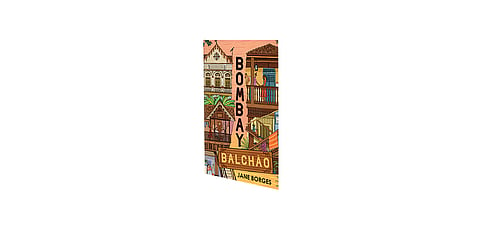
- Destinations
- Experiences
- Stay
- What's new
- Editor’s Picks
- Responsible Tourism
- CampaignsCampaigns
- Subscribe

The streets of Mumbai have always been as peppered with colourful stories as they are today. This is evident in Jane Borges&rsquo new novel Bombay Balchão. Set in South Bombay (later, Mumbai), Borges brings to life the flavour of the Catholic community that resides in Cavel. Fictional weaves inspired by (some) real-life incidents thrust us into the lives of the Coutinhos and their neighbours. While all fictional residents of the community receive their five-page moment in the limelight, it is Michael Coutinho who is the common link that drives the narration forward. Hopping back and forth in time with every chapter, we relive history from the British reign to Indira Gandhi&rsquos emergency to the era of flat-screen televisions as we see accounts of various events that shape his life, featuring Michael&rsquos sister Annette, wife Merlyn, friends Mario and Joe, and neighbours Benjamin and Ellena.
Built on a bed of some light-hearted, some emotional tales, Borges plucks out hard-hitting issues of society over the decades. Whether it is superstitious Merlyn trying to exorcise her mother-in-law&rsquos spirit out of her husband, or the unfortunate love triangle between Annette, her husband Benji and her ex-fiance Joe, we get a taste of love, death, separation, domestic abuse, loneliness and friendship. Even topical concerns such as censorship, religion and war find their way into the narrative.
Borges plays on every emotion, often in obvious ways and sometimes in hidden messages. The perfect example is the chapter &lsquoDearest Butterfly, With Love&rsquo. The entire section unfolds as an exchange between Michael and Ellena through letters. In merely 13 pages, we shuffle through two perspectives but it is the understated aspects, such as the postscripts and signatures that help read between the lines as you see the characters grow close and then further apart.
Grounded in reality, each character is a complex one. Borges makes it impossible to completely love or hate anyone as different shades of their personality are exposed. Michael&rsquos practical and helpful traits throughout the book are edged by his curt behaviour at times. Annette&rsquos indecisive and vain nature is infuriating, until we see her suffering. The newly-found soft side of the bitter gossip-monger Ellena leaves us with a smile on our face. The complicated string of events takes all of them through triumphant and trying times, and while you cannot enjoy the characters&rsquo decisions at every fork, you still end up rooting for them.
What one can really appreciate are the subtle nuances of the Catholic (particularly Goan) community that are sprinkled throughout the book. Characters using Konkani phrases such as men and oh, saiba and yelling out &ldquoulta pulta, sixty-nine. Two fat ladies eighty-eight. Jaldi five taken&rdquo during a game of Housie paint an accurate picture of Goan colloquialisms. Borges also takes note of minute details, like the dresses worn to church, the custom of jiving at parties and the common etiquette and habits of a Goan household. Even the mention of the traditional dish balchao is sly, yet significant. Wrapped in the noise and crowd of Mumbai, a little slice of Goa reaches out to you through these stories.
